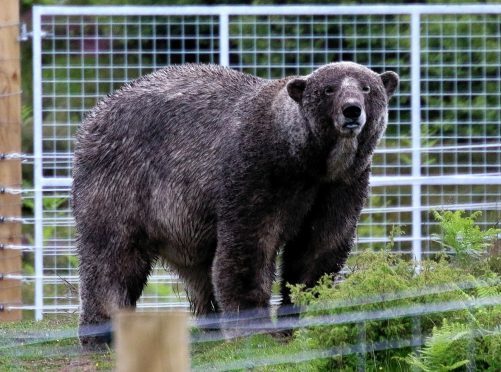They say a leopard does not change its spots – but it seems a polar bear can change its colour.
There was some consternation in the arctic enclosure at the Highland Wildlife Park this week when it appeared the resident female had been replaced with a brown bear.
But the great switcheroo was a false alarm – and it turned out Victoria had gone for such a thorough mud bath that she had changed colour.
At least her fur should be in tip-top condition after the mud mask, considered a beauty treatment by humans.
Vickie Larkin, Head Carnivore Keeper at RZSS Highland Wildlife Park, said: “The keepers had quite a good laugh when we discovered her; she’s generally always a bit muddy as she loves rolling about in the peat, but we have never seen her this muddy; she must have been having a ball tumbling around her enclosure. She soon cleaned off by taking a dip in her pool.”
The female bear is very playful and loves a good roll and tumble in her large, custom-built enclosure, which features a pond and soft areas of ground, as well as plenty of space for her to explore. It is completely separate to the male polar bears, which allows the Park to mimic the behaviour of polar bears in the wild who only come together to mate.
In March, Victoria and male bear Arktos embarked on the dance of romance. Arktos, the oldest of the Park’s two male polar bears, was transported the short mile across the park near Kingussie to move into a specially designed enclosure adjacent to Victoria, the UK’s only female polar bear.
Keepers were delighted to see the bears take to each other straight away. The new pair were so keen on each other that they slept at the fence line and repeatedly tried to touch.
In total, RZSS Highland Wildlife Park devotes more space to polar bears (over four hectares, or 10 acres, in total) than any other zoological institution in the world, and the successful work of the park in enclosure design and development is being mirrored elsewhere.
